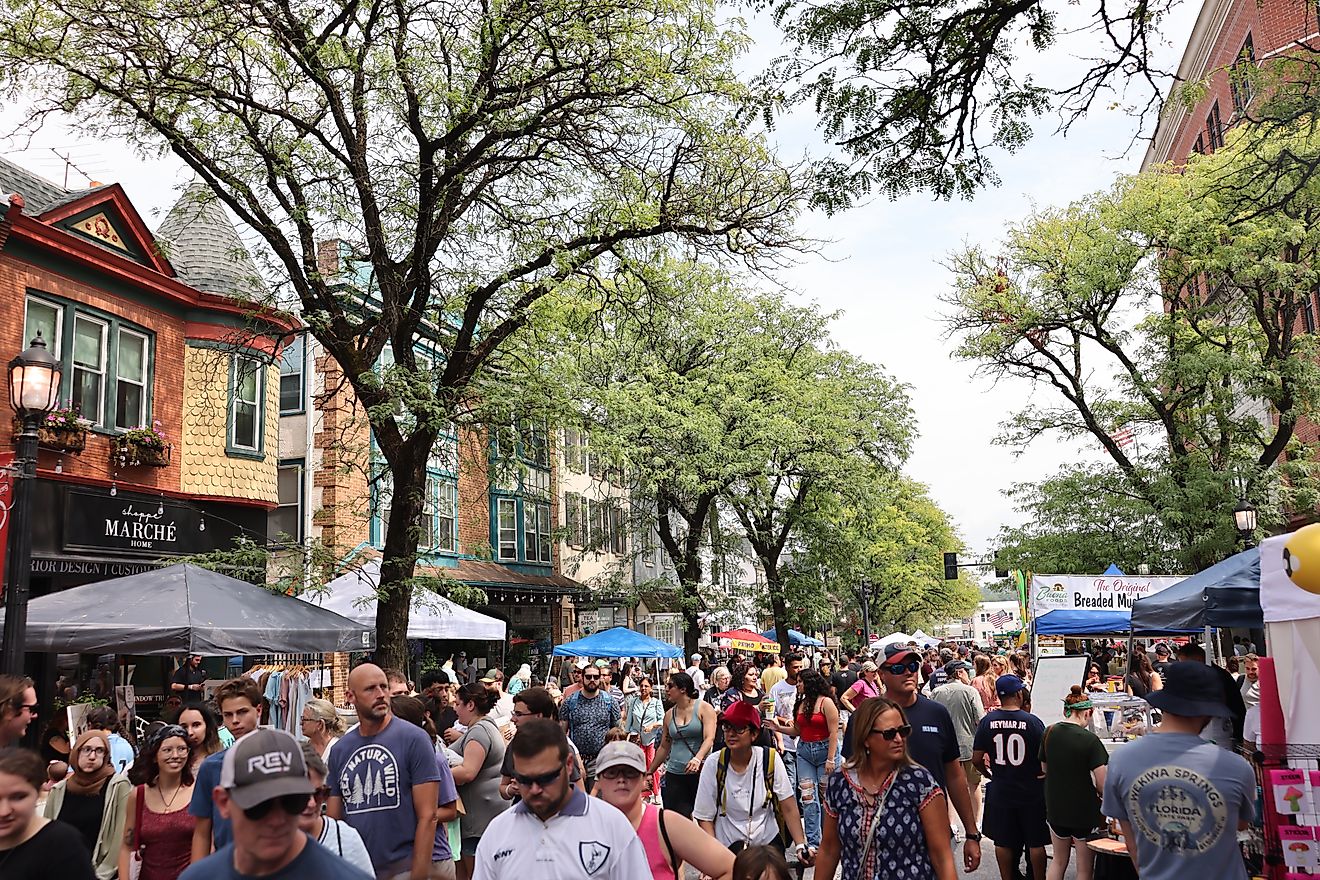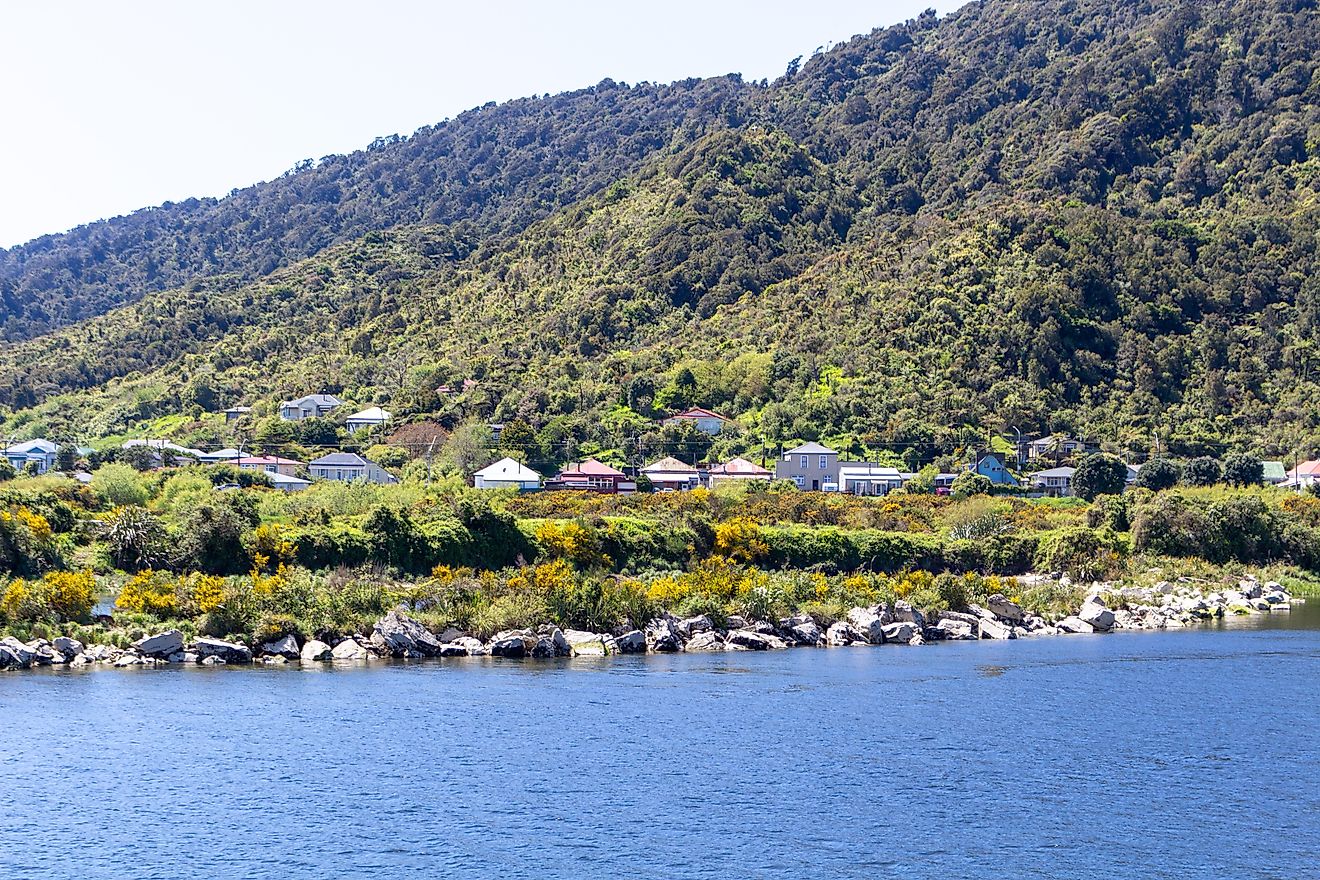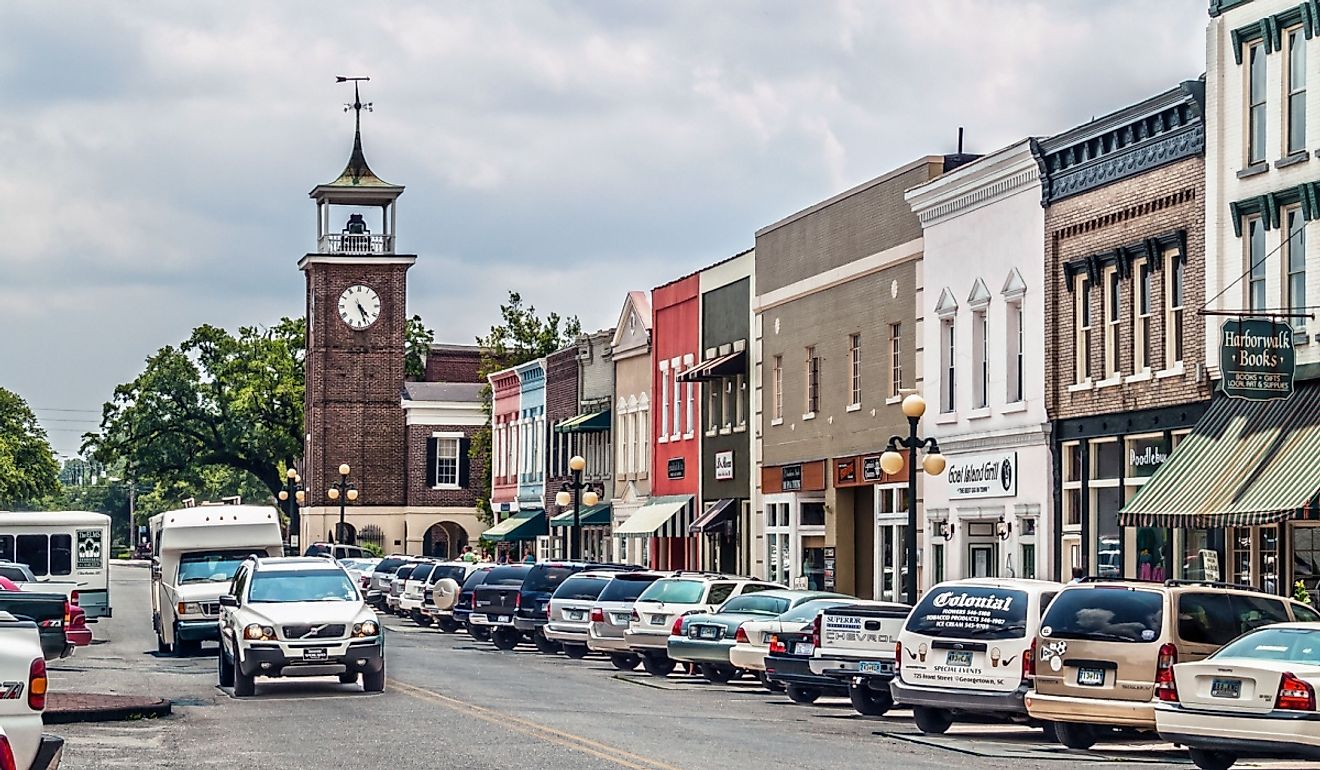
Discover The Largest Cities In Wisconsin
The Badger State, founded in 1848, has a rich heritage. The region was originally shaped by Native American tribes, French fur traders, and European settlers. In the 19th and 20th centuries, it matured into a hub for dairy farming, manufacturing, and brewing. While it is known today for its cheese, beer, and the Packers pro football team, there is so much more to the state. Wisconsin is blessed with natural beauty, from its pristine lakes to its verdant forests and rolling hills. The University of Wisconsin system and Marquette University provide standout institutions of learning that contribute to a culture of knowledge. Many focus on the state’s outdoor attractiveness and activities; however, the state also plays host to some bustling cities that have their own wonders to explore.
Milwaukee is the largest city in the state and is probably most thought of for its brewing heritage. Madison is the capital and home to the prestigious University of Wisconsin-Madison. Green Bay has Packers football. Kenosha offers a happening music scene and water views. Racine has some of the best beaches. Appleton lies along the Fox River and is admired for its beauty and respected for its legacy in the paper industry. Waukesha is a great place for some R&R with its natural springs. Discover more about the largest cities in Wisconsin.
1. Milwaukee
Population: 563,305

Lying along the western edges of Lake Michigan, Milwaukee rose from its beginnings as scattered Native American tribes to a thriving city. The word Milwaukee is derived from the Potawatomi tribe and means ‘council grounds.’ The region was shaped by Native Americans and 18th-century French fur traders. By the 19th century, modern cities had emerged and experienced rapid growth, driven by the Industrial Revolution. Milwaukee has become a center for brewing, shipping, and manufacturing.
The city is admired for its parks, especially Lake Park, designed by Frederick Law Olmsted. Milwaukee Art Museum and the Milwaukee Repertory Theater have cultivated a flourishing art scene. Annual festivals like Summerfest (one of the world’s largest music festivals) add to the sense of community. Must-see historic landmarks include the Historic Third Ward (well-maintained 19th-century warehouses), Milwaukee City Hall, and the Pabst Mansion.
Milwaukee has distinguished itself with several higher institutions of learning, including the University of Wisconsin-Milwaukee and Marquette University.
Milwaukee's population is 563,305, with slightly more women than men. The city is racially diverse, evenly split between whites and blacks, with a sizable Hispanic population. The median home value is around $157,800, making it relatively affordable (according to census.gov).
When in Milwaukee, make sure to do a brewery tour. Milwaukee’s public transit includes buses and The Hop, a hop-on, hop-off streetcar. In good weather, bike rentals can be a fun and healthy way to get around, plus they allow one to explore bike trails and lakefront paths.
2. Madison
Population: 272,903

Located on an isthmus between Lakes Mendota and Monona is the city of Madison. Once the home of Native American “mound builders” the region became a city in the 19th century and quickly grew, as it was selected to be the state’s capital. Flourishing industries include health care and manufacturing. Madison is graced by rolling hills, lovely lakes, and several parks.
Madison has developed a lively cultural community supported by theaters, museums, and live music venues. The Overture Center for the Arts and the Historical Museum are some gems. Historical landmarks are Frank Lloyd Wright’s Monona Terrace, The Wisconsin State Capitol, and the University of Wisconsin-Madison’s Bascom Hall, which are not to be missed.
Madison offers some of the best education in the state with the University of Wisconsin-Madison, one of the top public research universities in the US.
Madison's population is 272,903, with slightly less than half being female. 75% of the population is white, 7% black, and 8% Asian, among other ethnicities. The median home value is $326,600, which is below the national average.
Madison is a walkable city with many walking tours, allowing one to safely explore downtown on foot. The farmer’s markets are excellent, and outdoor activities, such as hiking, biking, kayaking, and nature reserves, are plentiful.
3. Green Bay
Population: 106,095

Both the name of one of Lake Michigan’s bays and Wisconsin’s biggest cities is Green Bay. The region is one of the oldest settlements in the state and was previously home to the Menominee and Winnebago tribes. Later, in the 17th century, the area became an important trading post for the French. Presently, the city brims with natural beauty, offering verdant forests and beaches, affording residents and visitors plenty of outdoor activities, including hiking, boating, swimming, and fishing. The town boasts thriving industries in paper, insurance, food, trucking, and machinery.
For the American football fans out there, Green Bay is the Packers’ territory. The Green Bay Packers are one of the oldest pro football teams in the US. The Packers Hall of Fame and Lambeau Field are must-see attractions for tourists.
Historical landmarks worth seeing include Heritage Hill State Historic Park, the Neville Public Museum, and the National Railroad Museum.
The University of Wisconsin-Green Bay is a quality institution with a range of undergraduate and graduate programs.
The population of Green Bay is 106,095, with roughly an equal split between males and females. The largest ethnic groups include whites (72%), Hispanics (17%), and mixed race (11%). Green Bay provides inexpensive living with a median home value of $172,700.
While in the city, consider sampling local favorites like cheese curds and bratwurst. The Bay Beach Amusement Park offers vintage rides for families.
4. Kenosha
Population: 98,484

Nestled on the southwestern shore of Lake Michigan is the city of Kenosha. Founded by New York settlers in 1835, it became a hub for shipping and manufacturing and in the 20th century a center for the auto industry. Boasting sparkling lake views, the town has become a haven for outdoor enthusiasts with its beaches, parks, and sand dunes.
Cultural attractions include the Civil War Museum and the many annual public events, such as the Kenosha HarborMarket and the Kenosha Kingfish baseball games. Historical landmarks include the Kenosha History Center, which displays the town’s maritime history, and the Southport Light Station and Museum.
Carthage College offers spectacular lake views and a fine liberal arts education.
The population is around 98,484, with a slight majority being female. A breakdown of the racial makeup of the city includes 71% white, 18% Hispanic, 12% mixed race, and 10% black. The median home value is $194,400, making it extra affordable.
Additional travel tips include using public transit, such as streetcars. Visit art galleries, like Lemon Street Gallery, and enjoy the beaches and water activities at Alford Park and Beach.
5. Racine
Population: 76,462

Nested at the mouth of the Root River and the shores of Lake Michigan is the city of Racine. Gateway Technical College offers vocational degree programs. The city has a rich history in manufacturing, especially in automobiles and household appliances. Before all that the Potawatomi Indianans inhabited the area for centuries.
The city provides an array of cultural attractions and historical landmarks. The Racine Art Museum, the Racine Zoo, and the Racine Symphony Orchestra are worth noting. The Wind Point Lighthouse, SC Johnson Headquarters, and their Frank Loyd Wright-designed administration building are popular landmarks. While touring the city, visit North Beach Park and the Root River Trail.
The population of 76,462 is made up of nearly 52% female, 50% white, 23% Hispanic, and 21% black, making it a diverse group. The median home value is $147,000, which is highly affordable.
6. Appleton
Population: 74,511

Located on the northeastern end of the state, along the Fox River, is the city of Appleton. The Fox River Valley Indians were among the earliest settlers. In the mid-19th century, the modern city was founded, becoming a hub for paper production. The Fox River provides more than beautiful waterfront views; it hosts activities such as boating, fishing, and serene river walks.
There are a few notable cultural attractions in town, including the Fox Cities Performing Arts Center and the Hearthstone Historic House Museum. Historical landmarks worth seeing are The Fox River Locks and the History Museum.
Lawrence University is a liberal arts college in Appleton that is admired for its music program and beautiful campus.
Appleton’s population of 74,511 is evenly split between males and females. 83% of residents are white, 6% are Hispanic and Asian, and nearly 3% are black. The median home price is $192,200 (Census.gov).
Check out the River Tyme Tours on the Fox River to explore the historic landmarks and enjoy the water views. In the warmer months, live music is also available at the outdoor amphitheater.
7. Waukesha
Population: 70,454

Originally the ancestral home of the Potawatomi, Menomonee, and Ho-Chunk Indians, Waukesha is prized for its natural springs, and European settlers turned it into a resort designation in the late 19th century. Marked by its gently rolling hills, lakes, and parks, the city is a center for relaxation. Cultural attractions and historical landmarks include the Waukesha County Historical Society and Museum, the Ten Chimneys historic site and the Les Paul Performance Center.
In town is Carroll University, a four-year institution that is affiliated with the Presbyterian denomination.
The population of Waukesha is 70,454, with an even split between males and females. 85% are white, 12% Hispanic, and 3% Asian and black. The median home value is around $267,200.
Be sure to visit Bethesda Park and Mineral Springs Park for the best the city has to offer in terms of natural springs and the beauty of the outdoors. Check the city’s calendar to discover fun events throughout the year, like their Farmer’s Market in June and the Pewaukee Lake Water Ski Show.
Parting Thoughts
It is more than just lakes, north woods, cheese, beer, and football. From Green Bay’s deep roots as the oldest settlement in the region to the lively urban atmosphere of Milwaukee and the academic center of Madison, the state of Wisconsin has more to offer residents and visitors than some might imagine. Its largest flourishing cities are definitely worthy of further discovery!
30 Largest Cities In Wisconsin
| Rank | City | Population* |
|---|---|---|
| 1 | Milwaukee | 563,305 |
| 2 | Madison | 272,903 |
| 3 | Green Bay | 106,095 |
| 4 | Kenosha | 98,484 |
| 5 | Racine | 76,462 |
| 6 | Appleton | 74,511 |
| 7 | Waukesha | 70,454 |
| 8 | Eau Claire | 69,737 |
| 9 | Oshkosh | 65,948 |
| 10 | Janesville | 65,911 |
| 11 | West Allis | 58,950 |
| 12 | La Crosse | 51,380 |
| 13 | Sheboygan | 49,773 |
| 14 | Wauwatosa | 47,289 |
| 15 | Fond du Lac | 44,339 |
| 16 | Brookfield | 41,958 |
| 17 | New Berlin | 40,315 |
| 18 | Wausau | 39,833 |
| 19 | Menomonee Falls | 39,246 |
| 20 | Greenfield | 37,071 |
| 21 | Sun Prairie | 36,653 |
| 22 | Beloit | 36,449 |
| 23 | Oak Creek | 36,087 |
| 24 | Franklin | 36,066 |
| 25 | Manitowoc | 34,570 |
| 26 | West Bend | 31,604 |
| 27 | Fitchburg | 30,834 |
| 28 | Mount Pleasant | 27,597 |
| 29 | Neenah | 27,361 |
| 30 | Superior | 26,459 |
*According to Census.gov (2022 estimates)











